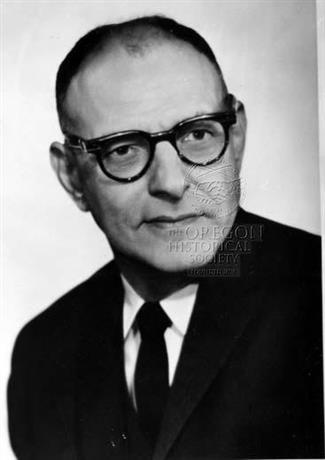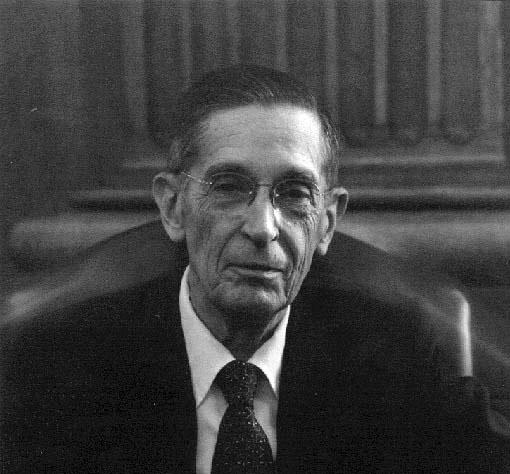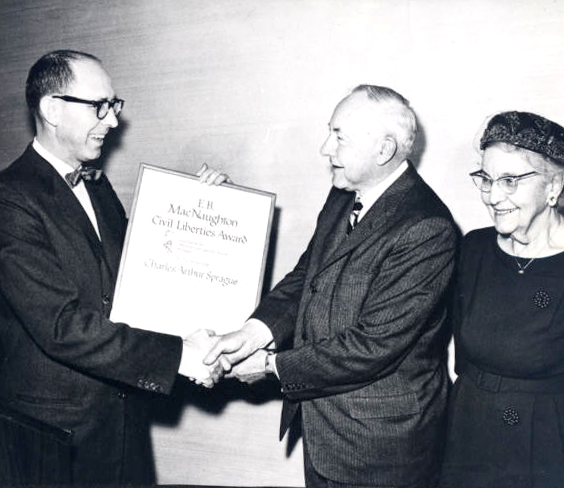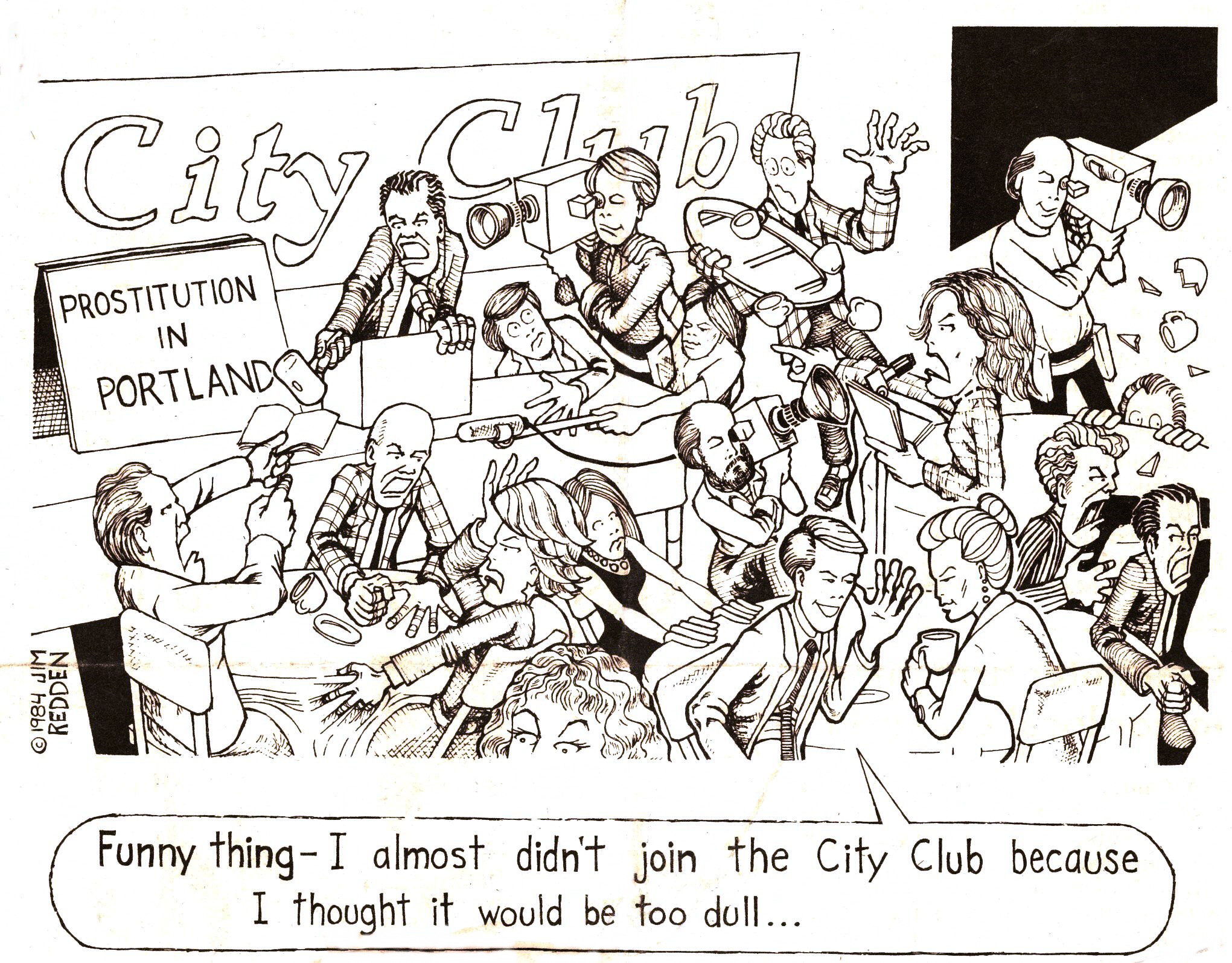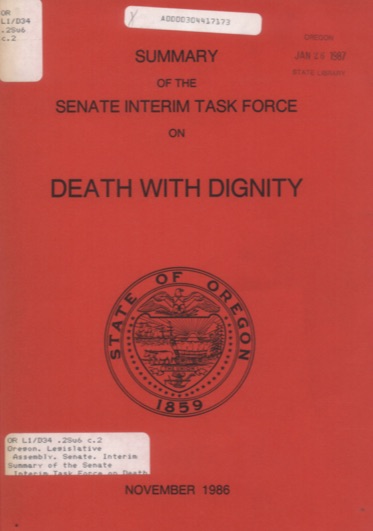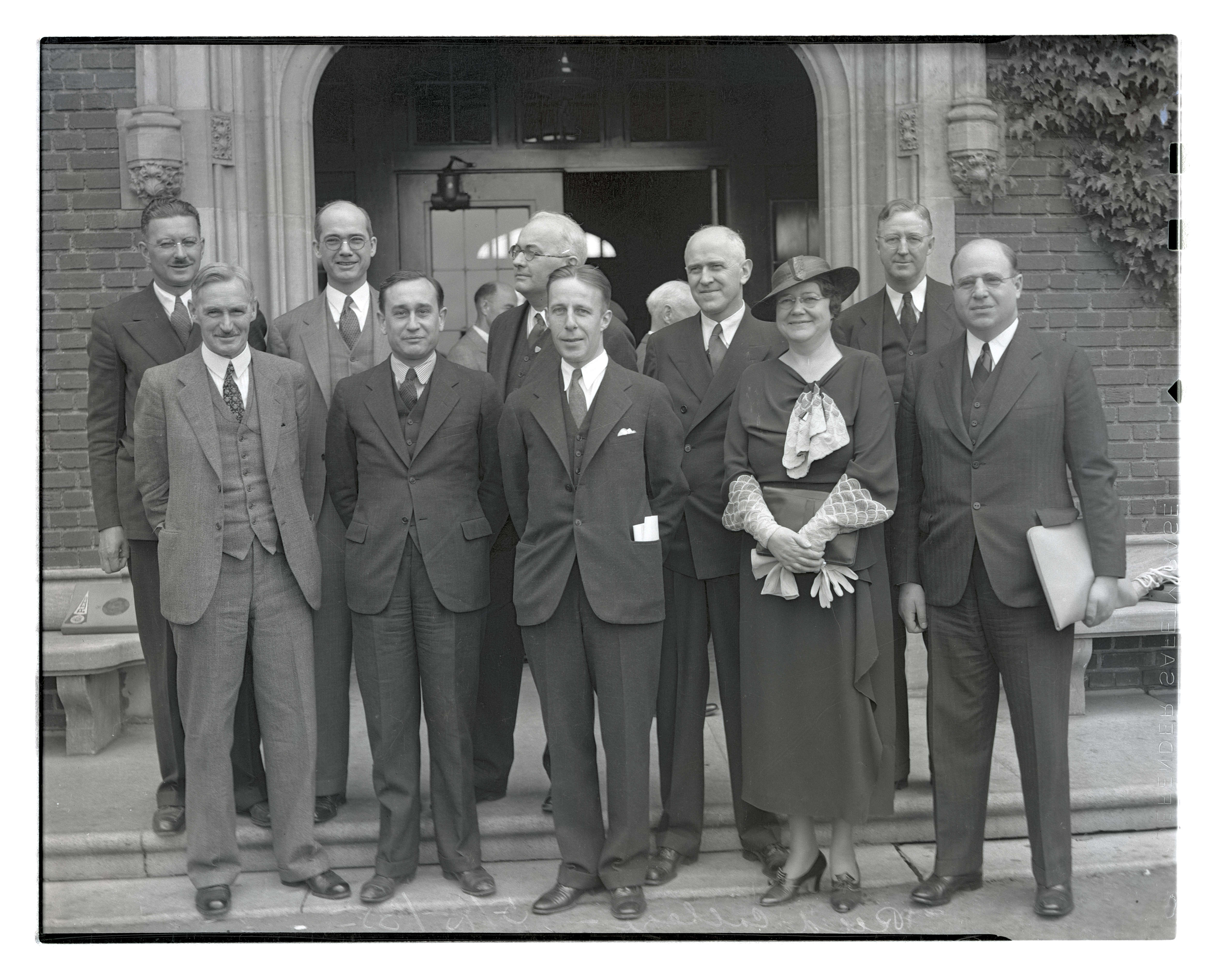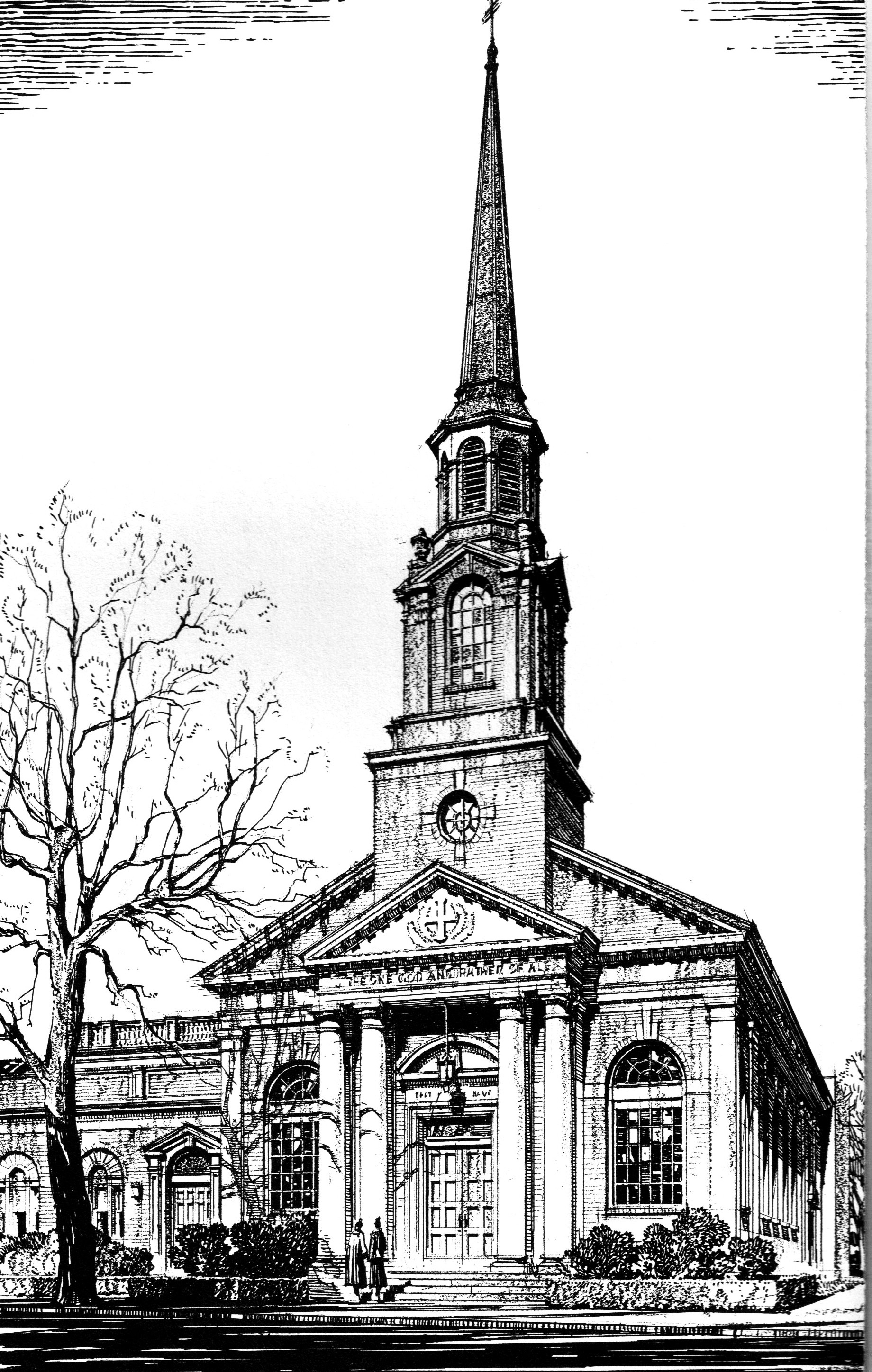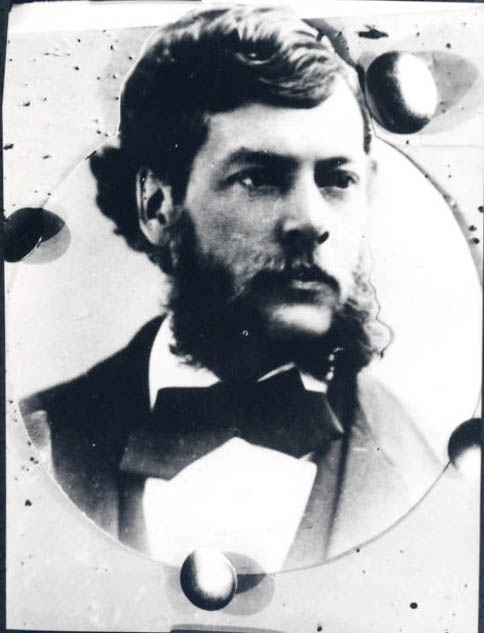Richard Steiner was the senior minister of the First Unitarian Church in Portland from 1934 to 1966. An inspirational preacher who helped rebuild the congregation after the Depression, he inspired others to a life of social action. His individual efforts as an activist and community leader influenced Portland’s civic and cultural development; but beyond that he inspired members of his congregation to become leaders in social justice organizations. Throughout his career, he was a sought-after guest minister by Unitarian churches throughout the United States.
Richard Morrow Steiner was born on July 1, 1901, in Sandusky, Ohio, to Sara Levy and Edward Steiner, a Congregational minister. The family moved to Grinnell, Iowa, in 1903, when Dr. Steiner was hired as a professor of applied Christianity at Grinnell College. Richard Steiner enrolled at Grinnell, graduating in 1924 with a bachelor’s degree in English. In 1927, he received a master’s degree in rhetoric from the University of Michigan. The same year, on August 17, he married Deborah Lantz in Port Chester, New York; they would have two sons.
Richard Steiner worked as a reporter for the Cleveland Daily News and the Chicago City News Bureau and taught English at Washington State College in Pullman in 1925–1926 and at Bradley College in Peoria, Illinois, from 1926 to 1928. After earning a Bachelor of Divinity degree from the Chicago Theological Seminary in 1933, he taught religion at Grinnell, where he believed that students would be more open in discussing their doubts with a lay person than with a minister.
At about the same time, the board of the First Unitarian Church in Portland was searching for a minister to replace William Greenleaf Eliot Jr., who announced his retirement in March 1934. Eliot asked two professors at the Chicago Theological Seminary for recommendations, and they suggested Steiner, who had been an outstanding student of homiletics (the study of sermon writing and preaching). The congregation voted unanimously to call Steiner as its new minister. He took up the position on September 15, 1934.
Steiner went to work immediately. He used his talents as a dynamic preacher and leader to energize a church that was still suffering the effects of the Depression—a time when church membership had declined and the budget had decreased. Despite efforts to reverse the trend, the church continued to lose members until 1941, when the war effort revitalized the economy.
In 1937, Steiner became a member of the Ministry Committee of the American Unitarian Association (now the Unitarian Universalist Association). He identified himself theologically as a Hicksite Quaker; a Congregationalist, the denomination that ordained him; a Unitarian, the church he served; and eventually a Universalist (who believe that God would not privilege only a portion of the population and condemn the rest). The Unitarian and Universalist churches eventually merged into a single denomination in 1961.
Steiner was committed to a social gospel ministry in which the church was involved in the community. He was personally involved in social action and encouraged his congregation to be similarly engaged. The generally apolitical Women’s Alliance focused on racism and sponsored programs, classes, and activities—work that continued for three decades. An interracial Friendship Club, formed in 1944, expanded their activities to include problems of migrant workers.
The Baby Boom brought more congregants to First Unitarian, and lay leader E. B. MacNaughton encouraged Steiner to hire Gertrude McIntosh as its first director of religious education. The Chapel House was built in the mid-1950s to house the school. As part of a national movement to expand the denomination, First Unitarian “seeded" three new congregations: Michael Servetus Fellowship in Vancouver, Washington (now the Unitarian Universalist Church of Vancouver), West Hills Unitarian Fellowship (now West Hills Unitarian Universalist Fellowship), and Eastrose Fellowship (now Eastrose Fellowship Unitarian Universalist).
Steiner was a director of the Portland Civic Theater in 1939–1940 and occasionally acted in plays. He served on the Selective Service appeals board and was a leader in the local USO. Because of his advocacy for progressive causes, the Red Squads of the Portland Police listed him as a subversive and maintained an extensive file on him during the 1950s, using the information to besmirch his name. Steiner was president of the City Club in 1951 and in 1963 was on the Committee to Study Segregation in the Public Schools. He published Guide to a Good Marriage in 1955 and had a strong interest in psychology and counseling. He also was elected as the first president of the Interfaith Counselling Center, an organization he helped found.
Steiner is remembered as a brilliant and prophetic preacher and leader who helped build the First Unitarian Church into one of the largest and most important Unitarian-Universalist congregations in America. Inspired by his preaching and his example, many members of his congregation were active in social justice activities, including Allan Hart, a founding member of the Oregon Affiliate of the American Civil Liberties Union; Charles Davis, the longtime chair of the Oregon ACLU; and Don Marmaduke, a lawyer who provided legal assistance for those protesting segregation in Mississippi.
After his retirement in 1965, Steiner and his wife moved to Pilgrim’s Place, a Christian retirement community in Claremont, California. Together with several others, he formed a death-with-dignity committee there. He was awarded an honorary Doctor of Divinity degree by Grinnell College in 1943 and by the Starr King School for the Ministry in 1958. An active member of the ACLU, he received the E. B. MacNaughton Award in 1964.
After a long illness and a fall, Richard Steiner took his own life on August 4, 1975. His personal example helped lead to Oregon’s Death with Dignity Act, implemented in 1997. The church he led for so many years, now called First Unitarian Portland, continues to practice social activism.
-
![]()
The Reverend Richard M. Steiner of the First Unitarian Church, Portland, 1959.
Oregon Historical Society Research Library, Oregon Journal Collection, 014312
-
![]()
Eliot Chapel, First Unitarian Church, c.1930s.
Oregon Historical Society Research Library, Digital Collections, Oregon Journal Negative Collection, 372A1261
Related Entries
-
![Allan Hart Jr. (1909–2002)]()
Allan Hart Jr. (1909–2002)
Allan Hart was a Portland attorney who was a leading specialist in ener…
-
![Charles Davis (1919-2002)]()
Charles Davis (1919-2002)
Charles Davis was a distinguished Oregon businessman, public servant, a…
-
![City Club of Portland]()
City Club of Portland
City Club of Portland is Oregon’s largest civic affairs group. It is a …
-
![Death with Dignity Law]()
Death with Dignity Law
In 1994, Oregon voters were the first in the nation to approve an act t…
-
![Ernest Boyd "E. B." MacNaughton (1880–1960)]()
Ernest Boyd "E. B." MacNaughton (1880–1960)
E. B. MacNaughton was one of Portland’s most prominent citizens during …
-
![First Unitarian Church (Portland)]()
First Unitarian Church (Portland)
In 1866, the Ladies Sewing Circle, a small group of Portland women from…
-
![Portland Civic Theatre]()
Portland Civic Theatre
Portland Civic Theatre was at the forefront of a transitional movement …
-
![Thomas Lamb Eliot (1841-1936)]()
Thomas Lamb Eliot (1841-1936)
Thomas Lamb Eliot was one of the most influential clergymen in the hist…
Map This on the Oregon History WayFinder
The Oregon History Wayfinder is an interactive map that identifies significant places, people, and events in Oregon history.
Further Reading
Wilbur, Earl Morse, and Evadne Highlands. A Time to Build: The First Unitarian Church of Portland, Oregon, 1866-1966. Portland, Ore.: First Unitarian Society, 1966.
Cumfer, Cindy. Toward the Beloved Community: The First Unitarian Church of Portland, Oregon, 1865-2015. Portland, Ore.: First Unitarian Church, 2015
“Rev. Steiner, 74, dies in California” Portland Oregonian, August 5, 1975, p. 30.
Steiner, Richard M. A Guide to a Good Marriage. Boston, Mass.: Beacon Press, 1955.

